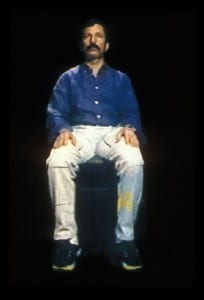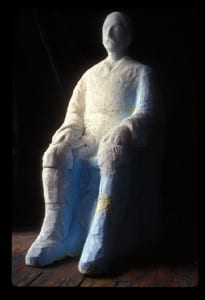One topic that has my interest to potentially cover with my solo performance in the concept of mortality. Primarily this was inspired by the idea that you cannot take anything with you once you die coupled with various injustices in the world for the sake of money. Whilst I know that my performance is on a very small scale I feel as though these two topics are ones I would like to address together.
Beyond my initial idea I felt like I could involve the ways in which death and mortality is dealt with in various cultures. In particular I felt as though Mexican culture and the Mexican day of the dead would provide for visually interesting performance. Laurie Anderson, who I had previously looked into concerning holograms, had also done a performance partly inspired from the Tibetan book of the Dead called Forty-Nine Days in the Bardo. Fitting with other works by Anderson it was a multimedia experience, and explores themes around Death including love, dreams and illusion. Taking this as a source of inspiration for my performance feels a good starting point, as I am looking to include technology use in a similar way to Anderson and address similar themes.
As the performance date falls close to my Birthday it could make it seem more personal, and address milestones as you grow old. One potential topic to address with birthdays is how they evoke excitement as a child, become milestones for teenagers and young adults, and then begin to mark growing ‘old’ and can become less eagerly anticipated. Another element concerning mortality to potentially use in the performance would be stories from my Grandfather’s life. He passed away in early 2015, but had lived an extraordinary life and using the style of David Cale I think I could use various parts of his life in my performance. By using the style of David Cale I mean in the sense of his inspiration, where he uses things that are close to him but have not necessarily happened to him, in a way that is personal rather than autobiographical. From these potential topics I believe the next course of action is to a little research into both the Tibetan book of the Dead and the Mexican day of the Dead, in addition to other cultures views on death. From these elements I can further work on a performance, and potentially link these ideas to the use of holograms that I looked into with Laurie Anderson.
About Education (2015) Day of the Dead [Picture] Available from: http://spanish.about.com/cs/culture/a/dayofdead.htm [Accessed 23 May 2016]
Fabric Workshop and Museum (2011) Laurie Anderson: Forty-Nine Days in the Bardo. Philadelphia. Available from: http://www.fabricworkshopandmuseum.org/Exhibitions/ExhibitionDetail.aspx?ExhibitionId=2eb43448-5bab-4d9b-a9dd-247d53079d43 [Accessed 23 May 2016]


